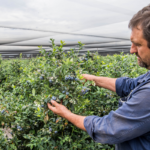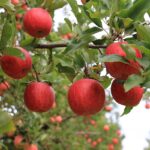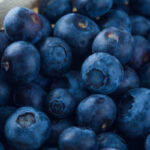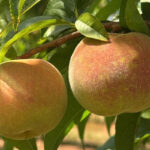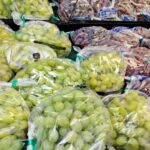Australia: Fruit fly discovered outside Tasmanian control area

A fruit fly has reportedly been discovered more than 30 kilometers outside a control zone set up in early February to confine the pest, but authorities have said there is no cause for alarm.
Local media ABC News said on Thursday that Biosecurity Tasmania was conducting tests on a suspected male fruit fly found at George Town.
George Town lies well east of the edge of the quarantine area set up following the discovery of larvae and adult fruit flies found in apricots at Spreyton, soon after the pest was detected on Flinders Island.
After those detections, control zones prohibiting the movement of fruit were put in place over the Furneaux Group Islands and the Greater Devonport Area, ABC reported.
Biosecurity Tasmania head Dr Lloyd Klumpp said authorities would not implement a separate control zone for the George Town area, explaining that the instance of a single fly did not mean a breeding population had been established.
"They could possibly be sporadic flies that have been blown to that area, hitch-hiked on a truck, found its way there, in some way or other, but we don't know that," he was quoted as saying.
"Those single male flies can be incidental, and don't necessarily mean that there's a breeding population."
He added there were numerous cases on the mainland of sporadic flies being detected outside of control zones.
Suspected larvae detection close to zone border
The development comes as authorities expanded the quarantine zone in Tasmania after finding larvae near the boundary of the previous control area.
Ongoing surveillance activities detected suspected larvae at a property inside the eastern boundary of the Greater Devonport Control Area.
“Although this detection has occurred within the current control area for Greater Devonport, because it is near the eastern boundary we will need to extend the current control area boundary," Klumpp said in a statement released on Feb. 15.
Klumpp said Biosecurity Tasmania staff had already commenced control treatment on the ground at the site. He added that although investigations were ongoing, because of the distance from the Spreyton detection site, it was unlikely that they were dealing with a population movement.
“The information at this stage indicates that we have a number of hot spot sites rather than a spreading population,” Klumpp said.
“Our priority is to identify where these sites are and target them specifically to eradicate fruit fly from the State and re-establish our fruit fly freedom on a statewide basis.”
Klumpp said further investigations were being undertaken to try and understand the cause.
“We have evidence there may have been problems on mainland Australia in the supply of fruit and we will be investigating that as well as part of our traceback investigations," Klumpp said.
Klumpp said the detection near the eastern boundary was found in a fruit tree of a kitchen garden at a site adjacent to a commercial orchard.

The original control area and the Feb. 15 expansion (in purple). George Town lies to the right of the map. Source: DPIPWE
Photo: www.shutterstock.com
















